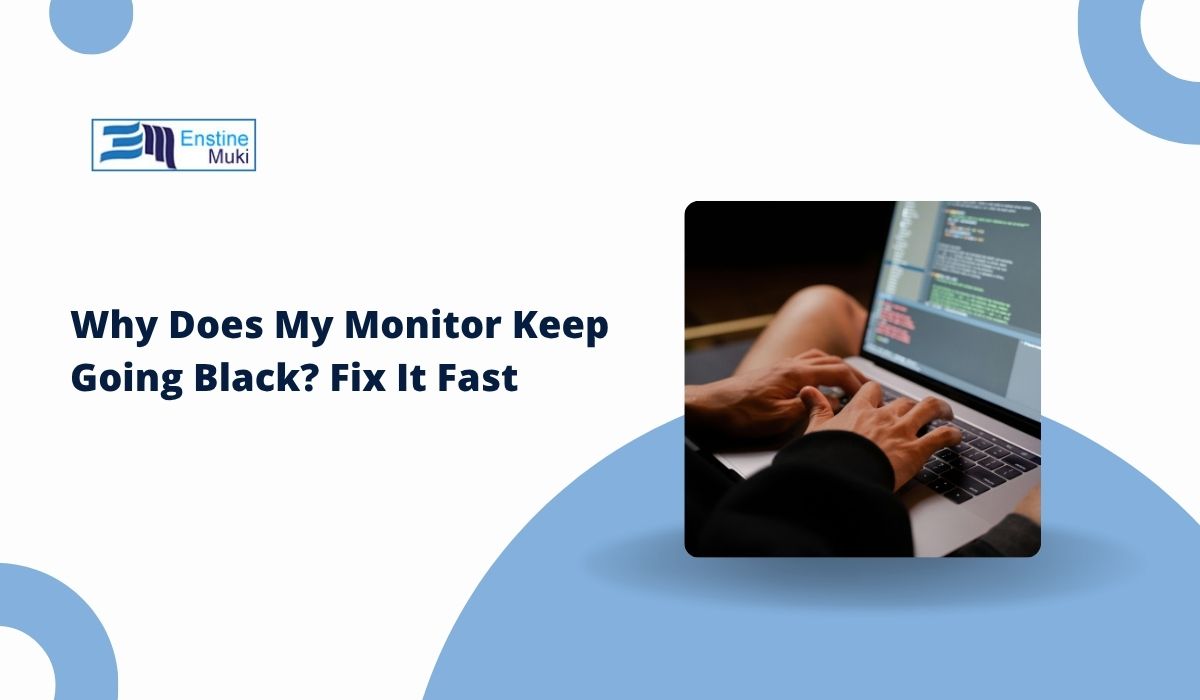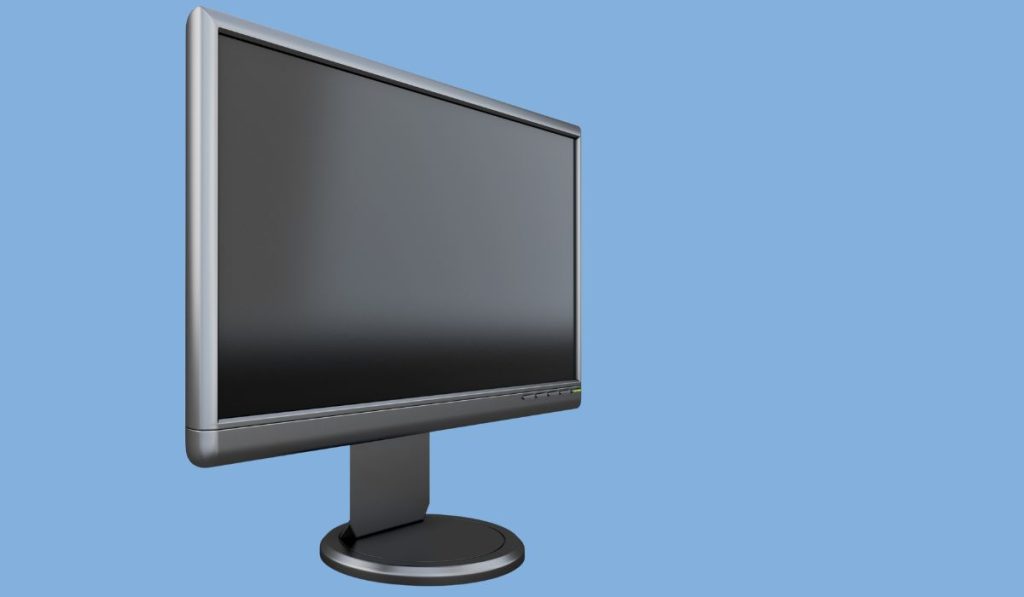You’re working, gaming, or watching something important, and suddenly your monitor goes black. The computer is still on, the fans are running, but the screen just cuts out. It’s one of the most frustrating tech problems because it can come and go without warning.
The good news is that a black screen doesn’t always mean your monitor is broken. In most cases, the problem comes from a loose cable, a bad driver, or a power issue. Let’s look at why this happens and what you can do to fix it.
Common Reasons Your Monitor Goes Black
There are a few key reasons your monitor might keep turning black for a few seconds or longer. The cause can be hardware-related or software-related. Here are the most common ones:
- Loose or damaged cables
- Power or outlet problems
- Graphics driver issues
- Overheating hardware
- Wrong display settings
- Aging or faulty monitor
Each cause affects your display in different ways. The next sections will show you how to find the reason and fix it step-by-step.
Power and Connection Issues
If your monitor loses power even for a moment, the screen will go black. This happens often due to a loose cable, damaged connector, or bad power source.
Check that both the power cable and HDMI or DisplayPort cable are plugged in tightly on both ends. Try connecting your monitor to a different power outlet or using a surge protector. If possible, test your monitor with another computer or laptop. If it works fine elsewhere, the problem is likely with your PC or cables, not the monitor itself.
Faulty power supply units (PSUs) can also cause flickering or screen cutouts, especially during gaming when the system draws more power. Make sure your PSU provides enough wattage for your setup.
Graphics Card or Driver Problems
Sometimes, the issue comes from the graphics card (GPU) or its drivers. If your monitor goes black only while gaming or watching videos, it’s usually a driver crash or GPU overheating problem.
Common reasons include:
- Outdated or corrupted GPU drivers
- The graphics card not seated properly in the PCIe slot
- Overheating due to dust or poor airflow
To fix this, update your graphics drivers through Device Manager, Nvidia GeForce Experience, or AMD Adrenalin software. You can also reinstall them completely if updates don’t help.
If the issue continues, check your GPU temperature using free tools like MSI Afterburner. Overheating above 85°C can cause temporary blackouts or shutdowns.
Overheating and Auto Shutoff
Monitors and computers have built-in safety systems to prevent overheating. When parts get too hot, they may shut off automatically for protection, causing a black screen.
Make sure your monitor and PC have enough ventilation. Clean dust from vents and fans regularly, and keep your setup away from direct sunlight or tight spaces. Overheating in the GPU, CPU, or power supply can also trigger blackouts, especially during long gaming sessions.
Display Settings and Refresh Rate Issues
Sometimes, the problem is not hardware at all but your display settings. If the refresh rate or resolution is set higher than what your monitor supports, it can cause the screen to go black or lose signal.
You can fix this by:
- Restarting your computer in Safe Mode.
- Going to Display Settings and choosing the recommended resolution.
- Lowering the refresh rate to 60 Hz temporarily.
Once the monitor displays normally again, you can adjust settings step by step until you find the stable configuration.
This issue happens often when connecting a new monitor or switching between HDMI and DisplayPort inputs.
Monitor Hardware or Firmware Faults
If your cables and GPU are fine but the monitor still keeps going black, the display itself might have a problem. Older monitors can develop faulty capacitors or outdated firmware that cause flickering or power loss.
If you notice clicking sounds, dim backlight, or fading colors before it goes black, that’s a sign of hardware aging. Check if your monitor manufacturer (like Dell, ASUS, LG, or Acer) offers a firmware update or warranty service. It’s often cheaper to repair than replace if it’s still covered.
How to Fix a Monitor That Keeps Going Black
Try these quick fixes before replacing anything expensive:
- Reconnect all cables firmly on both the monitor and PC sides.
- Use a different HDMI or DisplayPort cable.
- Update or reinstall your graphics drivers.
- Test the monitor on another computer or console.
- Turn off sleep and power-saving features in your operating system.
- Clean the inside of your PC and GPU fans to prevent heat buildup.
If your monitor still goes black after trying these steps, the issue is likely hardware-related and might need professional repair.
When to Replace or Repair Your Monitor
You might need to repair or replace your monitor if:
- The screen stays black even when connected to another device.
- The power light flickers but there’s no image.
- It makes buzzing or clicking sounds.
- You’ve already replaced cables and checked drivers with no luck.
At that point, it’s probably a failing display panel or power board. If your monitor is under warranty, contact the manufacturer for a replacement. Otherwise, weigh the cost of repair versus buying a new one. Many modern monitors are energy-efficient and affordable.
Preventing Future Black Screen Problems
You can avoid most black screen problems by following a few simple habits:
- Always use a surge protector to prevent power damage.
- Keep cables organized and away from heat or sharp bends.
- Clean dust from vents and fans once a month.
- Update GPU drivers and Windows regularly.
- Avoid overclocking your graphics card unless you monitor temperatures.
Taking small steps like these can keep your setup stable and extend the life of your display.
Conclusion
A black screen doesn’t always mean your monitor is dead. Most of the time, it’s just a loose cable, a driver issue, or a power issue that you can fix yourself. Checking connections, updating drivers, and keeping your system cool usually solves it quickly.
Before spending money on a new screen, try these simple fixes first. You might be surprised how often they work.

